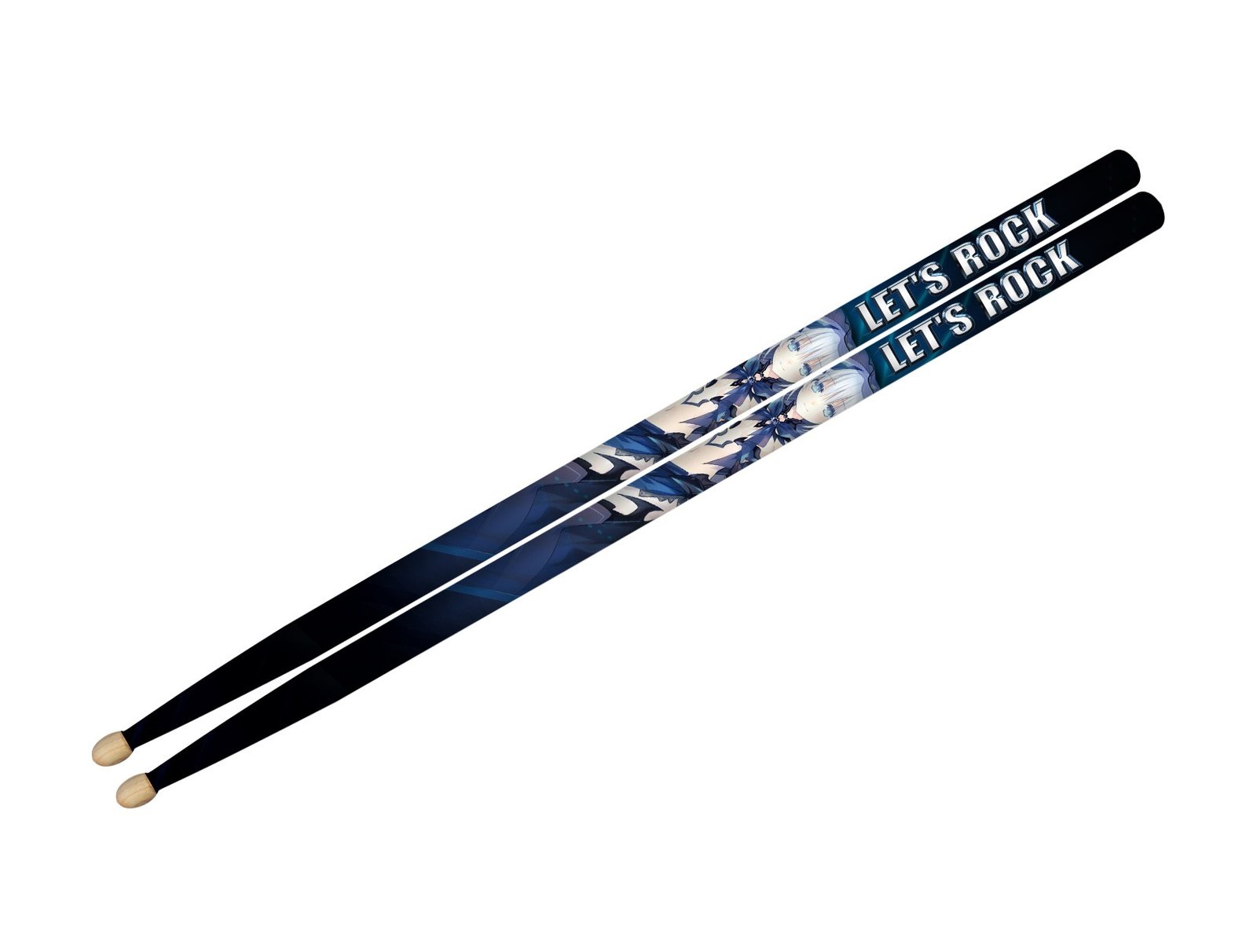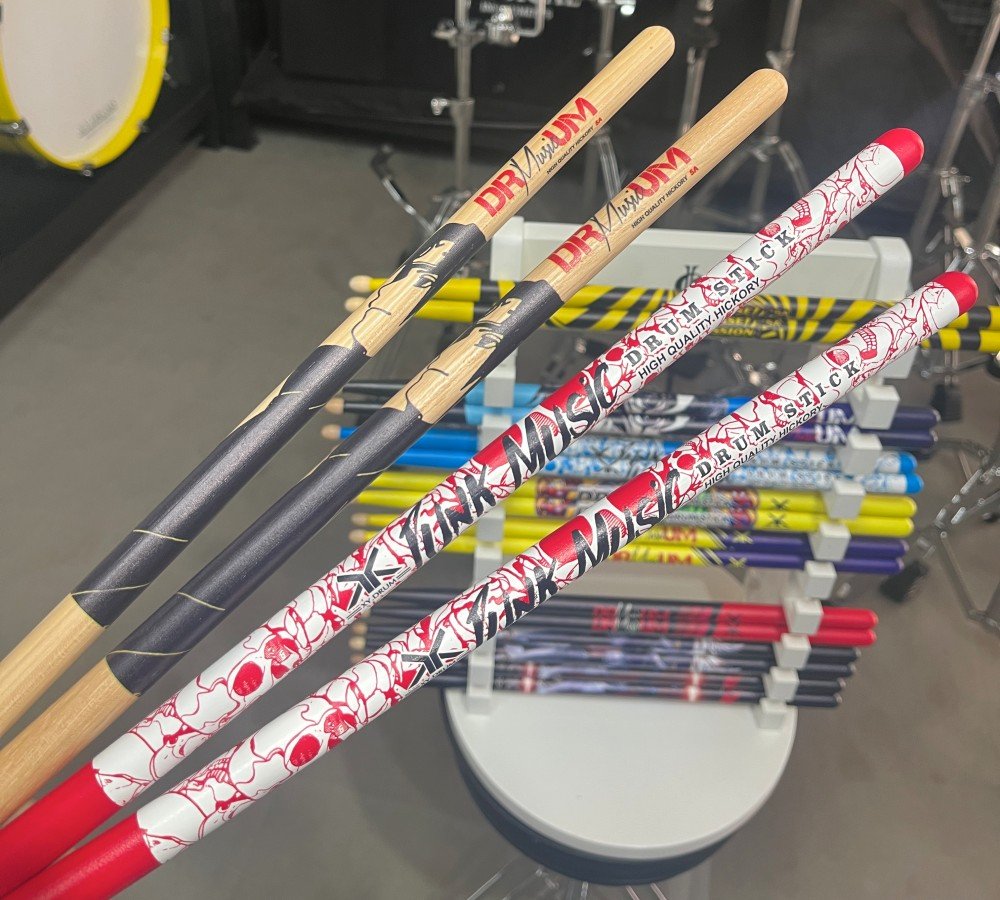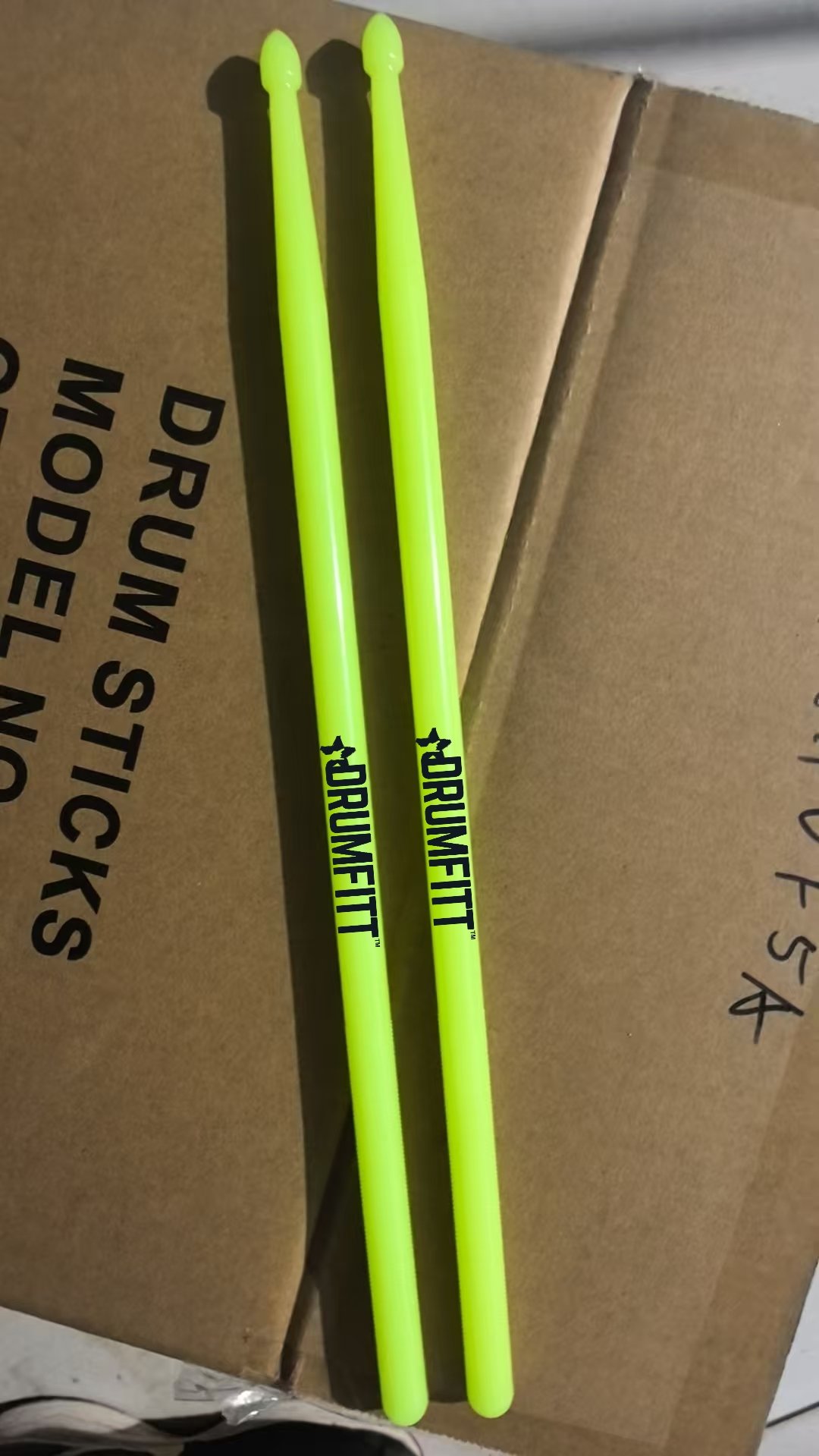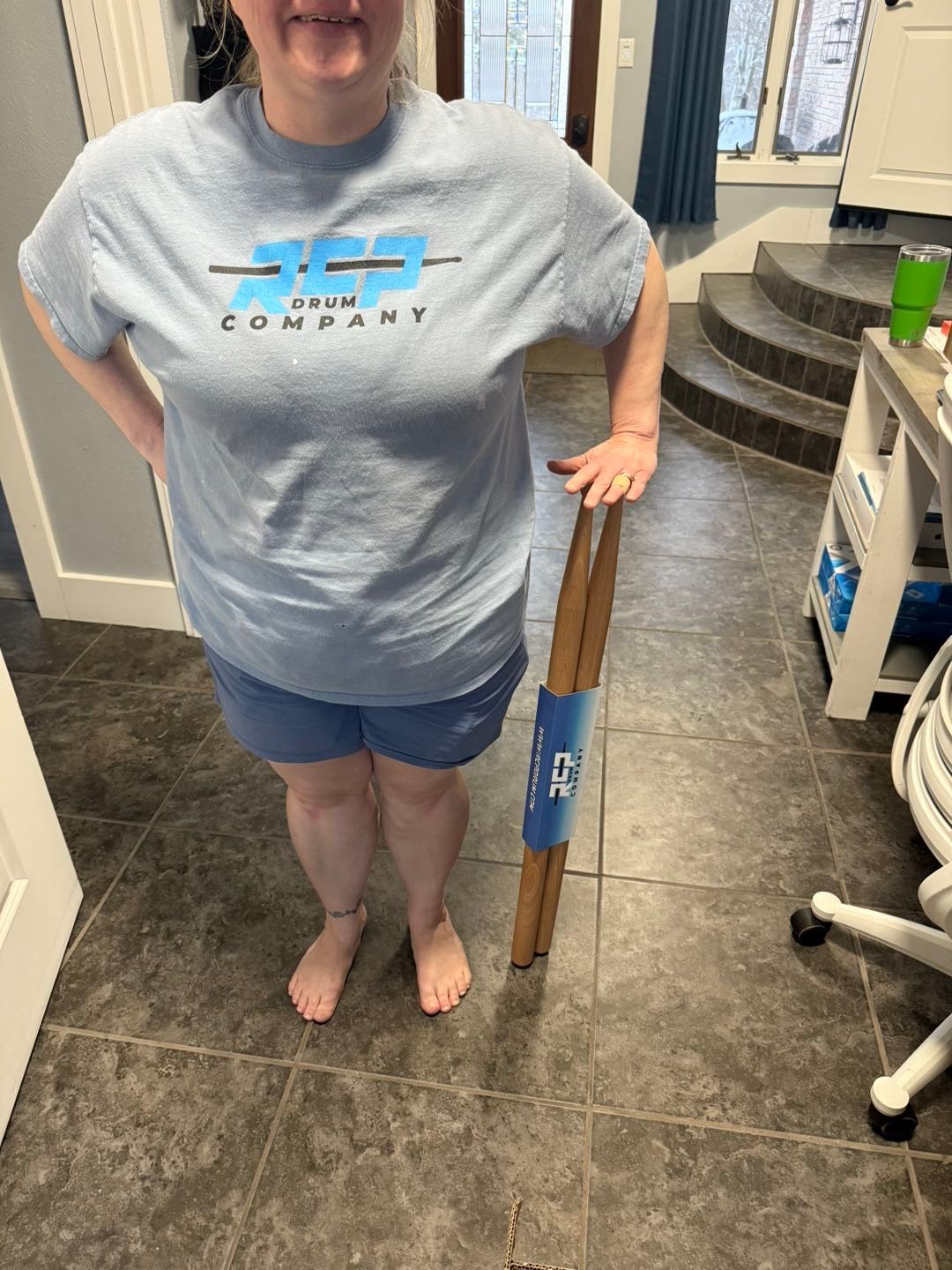
We will promptly create samples of the finished drumsticks based on your design for your review and confirmation. Additionally, we’ll provide a detailed video showcasing the final product to serve as a reference. Rest assured, everything will be thoroughly approved before we proceed with mass production.
If you’re unsure how to create professional design drawings, no problem! You can simply sketch the general appearance with a pencil, and our team of professional designers will transform it into a polished, high-quality design for you.
Last Updated on December 16, 2024, by the EcoStix Team
At EcoStix, we take pride in being one of the few companies capable of bringing your unique drumstick designs to life. Whether you’re looking for innovative designs or something similar to existing ones, we have the expertise to meet all your customization needs.
No matter the stage of your business—whether you’re an entrepreneur building your own brand or an established player in the market—our low-volume drumstick customization service is tailored just for you. Plus, we can provide matching drum-related products to help complete your lineup.
Curious about customized drumsticks? Learn everything you need to know—what they are, the options available, the materials we use, and more—in this comprehensive blog post. Dive in and discover how EcoStix can help you stand out!
Ready to Customize Your Own Branded Drumsticks Today?

What Size Drumsticks Do I Need?
Selecting the right drumstick size is essential for every drummer, whether you’re a beginner just starting out or a seasoned professional. Drumsticks aren’t one-size-fits-all; they come in various sizes, weights, and materials, each suited to different playing styles, genres, and personal preferences. If you’ve ever wondered, What size drumsticks do I need?, this guide will help you make the best choice.
The Anatomy of a Drumstick
Before diving into sizes, it’s important to understand the key parts of a drumstick:
Tip: The part that strikes the drum or cymbal. Tips come in various shapes (round, teardrop, oval, etc.) and materials (wood, nylon).
Shoulder: The tapering section between the tip and the shaft. Its length and shape affect rebound and speed.
Shaft: The main body of the drumstick. Its diameter determines the stick’s size (e.g., 5A, 7A).
Butt: The bottom end of the stick, which can also be used for playing.
Understanding these parts will help you better evaluate drumstick sizes and how they impact your playing.
The Number and Letter System: Decoding Drumstick Sizes
Drumsticks are commonly categorized by numbers and letters, such as 5A, 7A, or 2B. Here’s what these designations mean:
Numbers (7, 5, 2, etc.):
The number refers to the drumstick’s diameter. Lower numbers indicate thicker sticks, while higher numbers indicate thinner ones. For example, a 2B stick is thicker than a 5A stick.
Letters (A, B, S):
The letter signifies the stick’s intended use:
A (All-purpose): Originally designed for orchestral and general-purpose drumming. These sticks are versatile and great for various styles.
B (Band): Heavier sticks designed for marching bands and concert bands, offering more durability and volume.
S (Street): Thicker sticks used for outdoor performances, such as drum corps and street drumming. These provide maximum power and projection.
Common Drumstick Sizes and Their Uses
Here’s a breakdown of the most popular drumstick sizes and what they’re best suited for:
7A: Light and Thin
Best For: Jazz, light acoustic, and soft playing styles.
Characteristics: The 7A is one of the thinnest and lightest sticks, offering a delicate touch and faster rebound. It’s great for drummers who prioritize speed and subtlety.
5A: The All-Rounder
Best For: Rock, pop, jazz, and general-purpose drumming.
Characteristics: The 5A is a versatile stick with a balanced weight and diameter, making it suitable for a wide range of genres. If you’re unsure where to start, the 5A is a safe choice.
5B: Thicker and Heavier
Best For: Rock, heavy metal, and louder styles of music.
Characteristics: The 5B is thicker and heavier than the 5A, providing more power and durability. It’s ideal for drummers who need more volume and impact.
2B: Maximum Power
Best For: Marching bands, metal, and heavy rock.
Characteristics: The 2B is one of the thickest drumsticks, offering maximum power and durability. Its heavier weight is perfect for aggressive styles and high-impact playing.
S Sticks: For Street and Marching Drums
Best For: Marching bands, street drumming, and outdoor performances.
Characteristics: Extremely thick and durable, S sticks are designed for high projection and endurance during extended performances.
Choosing the Right Drumsticks for Your Style
Now that you understand the basics, let’s dive into some specific factors to consider when choosing the right size:
1. Genre
If you play jazz or acoustic sets, lighter sticks like 7A are ideal for finesse and precision.
For rock, pop, or general-purpose drumming, 5A sticks strike a balance between power and control.
Heavy styles like metal and hard rock call for 5B or 2B sticks for maximum impact and durability.
2. Playing Environment
If you’re playing in a small, quiet space, lighter sticks can help control volume.
For outdoor or large venue performances, thicker sticks ensure your sound carries.
3. Physical Comfort
Beginners or drummers with smaller hands may find thinner sticks like 7A easier to hold.
Larger hands or advanced players often prefer the sturdiness of thicker sticks like 5B or 2B.
4. Rebound and Speed
Thinner sticks offer faster rebound, making them ideal for intricate, fast-paced drumming.
Heavier sticks provide more momentum but may require more effort to control.
Materials and Their Impact on Size Selection
The material of your drumsticks can also influence your choice:
Hickory: The most common drumstick material, offering a good balance of strength, flexibility, and shock absorption.
Maple: Lighter than hickory, making it ideal for speed and subtle playing.
Oak: Denser and more durable, perfect for heavy hitters.
Carbon Fiber: Extremely durable and lightweight, a good choice for drummers looking for long-lasting sticks.
Tips for Finding the Perfect Fit
Test Multiple Sizes: Visit a local music store and try out different sizes. Pay attention to how each stick feels in your hands and how it responds when you play.
Consider Grip Tape: If a stick’s size feels slightly off, grip tape can help you achieve a more secure hold.
Experiment with Tips: The tip shape and material can influence your sound. Nylon tips produce a brighter tone, while wooden tips offer a warmer, more natural sound.
Start with Versatility: If you’re a beginner, start with a versatile stick like 5A. As you gain experience, you can explore more specialized sizes.
Why Stick Size Matters
Choosing the right drumstick size isn’t just about comfort; it directly impacts your sound, control, and overall performance. Using the wrong size can lead to fatigue, inconsistent playing, and even injury. Taking the time to find the perfect fit ensures you can play comfortably and confidently.
Conclusion
So, what size drumsticks do you need? It depends on your playing style, genre, and personal preferences. Beginners should start with a versatile option like 5A, while more experienced drummers can experiment with different sizes to suit their needs. Whatever size you choose, remember that the most important factor is how the sticks feel in your hands and how they help you express yourself through your drumming.
At YourDrumsticks.com, we offer a wide range of high-quality drumsticks, including eco-friendly options like EcoStix. Browse our collection today and find the perfect pair to elevate your drumming experience!
Start designing your custom drumsticks with EcoStix today, and take your drumming to the next level!
Call us and tell us about your favorite customized drumsticks today!




